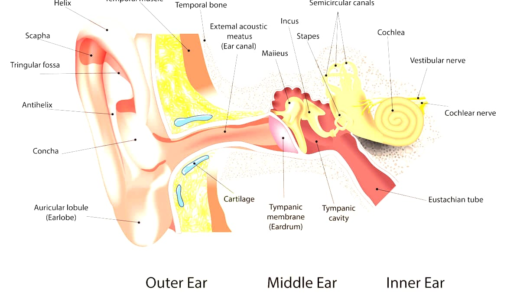This guide covers essential aspects of freshwater fish care, including common health issues, aquarium decoration tips, and specific care requirements for popular species. By following these guidelines, beginners can ensure a healthy and vibrant aquarium environment.
Choosing Your First Fish: What Types of Freshwater Fish Are Best for Beginners?
Freshwater fish care starts with selecting the right species for your aquarium. As a beginner, you want fish that are easy to manage and resilient. Here are some popular options:
- Betta Fish: Known for their vibrant colors and flowing fins, Bettas are hardy and require minimal care.
- Goldfish: A classic choice, they are easy to feed and maintain, making them perfect for novices.
- Guppies: These small fish are colorful, breed easily, and thrive in various conditions.
- Zebra Danios: Active and social, they adapt well to different environments and are great for community tanks.
Understanding which species are easy to care for can help beginners create a thriving aquarium. Always research the specific needs of each fish to ensure they fit your lifestyle and aquarium setup.
Fish Size Matters: How Do I Determine the Right Size of Fish for My Aquarium?
Fish size is crucial in freshwater fish care. The size of your aquarium dictates how many and what size fish you can keep. Here are some considerations:
- Tank Size: A larger tank allows for bigger fish and more species. Generally, aim for at least 20 gallons for beginners.
- Fish Size: Choose smaller fish if you have a limited space. Fish like Tetras and Rasboras are great choices.
- Adult Size: Research the maximum size of the fish species you choose. Some fish grow larger than expected.
Learning about the appropriate sizes of fish for various aquarium setups will help you avoid overcrowding and ensure a healthy environment for your aquatic pets.
Feeding Your Fish: How Often Should I Feed My Freshwater Fish?
Feeding is a critical aspect of freshwater fish care. Proper dietary needs vary among species, so here are some guidelines:
- Frequency: Most freshwater fish benefit from being fed 1-2 times a day. Overfeeding can lead to water quality issues.
- Type of Food: Different species may require flakes, pellets, or frozen food. Ensure you provide a balanced diet.
- Portion Size: Feed only what your fish can consume in a few minutes to prevent excess waste.
Knowing the proper feeding frequency and dietary needs of different species will promote their health and vitality. Always monitor their eating habits to adjust as needed.
Creating a Balanced Ecosystem: How Can I Create a Balanced Ecosystem in My Freshwater Aquarium?
Creating a balanced ecosystem is essential for successful freshwater fish care. A thriving aquarium mimics nature, where each component supports the other. Here are key components to consider:
- Filtration: A good filter removes waste and keeps water clean. Choose a filter suitable for your tank size.
- Plants: Live plants provide oxygen and absorb nitrates. They also offer hiding spots for fish, reducing stress.
- Substrate: The bottom material of your aquarium affects plant growth and fish comfort. Options include gravel, sand, or specialized substrates.
- Lighting: Proper lighting is crucial for plant health and fish activity. Use lights that mimic natural day and night cycles.
Understanding these components will help you create a healthy aquarium environment. Regular maintenance, such as water changes and monitoring equipment, ensures that your ecosystem remains balanced.
Water Quality Essentials: What Kind of Water Conditions Do Different Freshwater Fish Prefer?
Water quality is a cornerstone of freshwater fish care. Different fish species thrive in specific water conditions. Here are key parameters to monitor:
- pH Levels: Most freshwater fish prefer a pH between 6.5 and 7.5. Test your water regularly to ensure stability.
- Temperature: Keep water temperature appropriate for your species. Tropical fish usually thrive between 75°F and 80°F (24°C – 27°C).
- Hardness: Water hardness affects fish health. Most freshwater fish prefer soft to moderately hard water.
- Ammоnia and Nitrite Levels: Both should be at zero. High levels can be toxic to fish.
Identifying the specific water parameters suitable for various fish species is crucial. Regular testing and adjustments help maintain optimal conditions for your aquatic pets.
Compatibility Check: How Do I Choose Compatible Fish Species for My Aquarium?
Choosing compatible fish species is vital for a peaceful aquarium environment. Not all fish can coexist without issues. Consider the following:
- Temperament: Some fish are aggressive, while others are peaceful. Research each species’ behavior before mixing.
- Size: Larger fish may eat smaller ones. Ensure size differences are not extreme among tank mates.
- Water Requirements: All fish in your tank should thrive in similar water conditions, including pH and temperature.
- Schooling Needs: Some fish, like Tetras, prefer to be in groups. Ensure you keep them in appropriate numbers.
Learning how to select fish that can coexist peacefully in the same tank will enhance your aquarium experience. Always observe fish behavior and be ready to separate any that show aggression.
Common Health Issues in Freshwater Fish
Freshwater fish care includes being vigilant about common health issues that may arise. Recognizing symptoms early can prevent serious problems. Here are some typical health issues:
- Ich (White Spot Disease): This is a common parasitic infection characterized by white spots on fish. Treating it involves raising the water temperature and adding medication.
- Fin Rot: Often caused by poor water quality, fin rot results in frayed fins. Regular water changes and improving tank conditions can help.
- Swim Bladder Disorder: Fish may have difficulty swimming if they suffer from this condition. Adjusting their diet can often alleviate the issue.
- Fungal Infections: These appear as white or fuzzy growths on the fish. Prompt treatment with antifungal medications is necessary.
Being aware of typical health problems and how to address them is crucial for maintaining a healthy aquarium environment. Regular check-ups and water quality testing can prevent many issues before they arise.
Decorating Your Aquarium: What to Consider
When decorating your aquarium, it’s essential to create a visually appealing and fish-friendly environment. Here are key points to consider:
- Natural Elements: Incorporate rocks, plants, and driftwood to mimic a natural habitat. This not only enhances aesthetics but also provides hiding places for fish.
- Avoid Sharp Objects: Ensure that decorations do not have sharp edges that could injure your fish. Smooth surfaces are ideal.
- Live Plants vs. Artificial: While live plants improve water quality and provide oxygen, artificial plants require less maintenance. Choose based on your ability to care for them.
- Color Scheme: Use colors that complement your fish. Bright decorations can stress some species, while more subdued tones can create a calming atmosphere.
Knowing how to create a visually appealing and fish-friendly environment will enhance your aquarium experience and promote fish health.
Specific Care Requirements for Popular Freshwater Fish
Different species of freshwater fish have unique care requirements. Understanding these can help you provide the best environment for your aquatic pets. Here are some popular species and their specific needs:
- Betta Fish: They thrive in warmer water (76°F-82°F) and need a tank with hiding spots. Avoid keeping them with fin-nippers.
- Goldfish: Goldfish require a large tank due to their size and waste production. They prefer cooler water and need plenty of oxygen.
- Guppies: These colorful fish prefer slightly warmer water and should be kept in groups to feel secure. They thrive with a varied diet.
- Zebra Danios: They are hardy fish that adapt well to a range of conditions. Ensure they have space to swim and are kept in groups of at least five.
Understanding the specific needs of well-known fish species will help you provide optimal care and create a thriving aquarium.





Comments are closed.